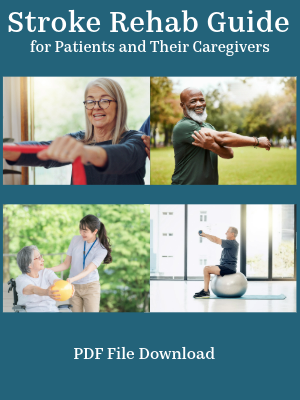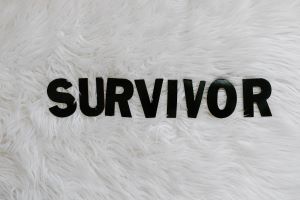Fatigue After Stroke
Medically reviewed by Karen Murray, OT, CHT, CSRS - written by Stroke-rehab.com
It is common to suffer fatigue after stroke (also called post stroke fatigue) and can occur even after mild strokes or TIAs. Fatigue is different from normal tiredness, as it doesn’t necessarily get better with rest. In fact, increased mortality has been identified in those that experience post stroke fatigue and depression especially in those who are single and don't have a good support system. The following are suggestions to help combat fatigue due to stroke:
1) Examine all medications taken, and make sure fatigue is not a side effect. If it is, ask your MD if there is an alternative medicine that doesn't cause fatigue.
2) If sleep is being disturbed, discuss medications or herbal remedies with your physician that might help improve sleep.
3) Make sure all medical conditions are being managed. A bloodwork check might point to other factors that could contribute to fatigue (i.e. anemia, problems with blood sugar, etc.)
4) Stay fit. According to studies, exercise helps improve depression/fatigue. Aquatic exercise or walking may be good alternatives. Find an activity you like that will promote improved fitness.
5)Check with your MD to see if you have clinical depression which may need treatment with medication or counseling.
6) Socialization is important. Try to get involved in activities that require socialization with others.
8) Practice cognitive exercises that will help combat mental fatigue. This could be crossword puzzles or simply playing games with others.
9) Use Energy Conservation Techniques. These techniques are used to make daily tasks more manageable:
- Prioritize Activities: Prioritize essential tasks based on importance and energy level. Save energy for the most crucial activities.
- Plan Rest Breaks: Schedule short rest breaks between activities to recharge.
- Use Assistive Devices: Utilize mobility aids, such as canes, walkers, or wheelchairs, to reduce physical strain while moving around.
- Sit for Tasks: Whenever possible, perform tasks while sitting down to reduce the physical effort and conserve energy.
- Organize Items: Arrange commonly used items to provide easy access. Avoid the need to bend, stretch, or reach excessively. For example, place dishes often used at waist to shoulder height rather than on a high or low shelf.
- Use Adaptive Equipment: Utilize reachers, dressing aids, or jar openers to make daily tasks easier.
- Pace Activities: Break larger tasks into smaller, manageable steps. Pace yourself and avoid rushing. For example during bathing - 1) Gather clothes then rest 2) Undress seated in chair 3) Take shower using shower bench 4) After shower, put on absorbent robe and rest while robe does most of drying for you 5) Get dressed at your own pace.
- Delegate and Seek Help: Don't hesitate to ask for assistance when needed. Friends, family, or caregivers can provide support with tasks that are energy-intensive.
- Avoid Overexertion: Stop an activity if you start feeling fatigued or in pain. Pushing through can lead to further exhaustion and potential injury.
- Easy Meal Prep: Opt for easy-to-make meals or use pre-cut, pre-packaged ingredients to minimize the effort required for cooking.
- Work at Proper Height: If standing, try to use raised countertops, tables, or workbenches to reduce the need to bend or stoop while working. If in a wheelchair, make sure items are low enough to reach comfortably and use lower surfaces.
- Clothing Choices: Select comfortable, loose clothing that is easy to put on and take off. Adaptive clothing or devices like elastic shoe laces or magnetic buttons can make dressing easier.
- Hydration and Nutrition: Maintain proper hydration and a balanced diet to support energy levels.
- Stay Organized: Keep a calendar to plan activities and prevent last-minute rushes.
Other Resources
You can access this pdf handout from The UK Stroke Association which better explains post-stroke fatigue or visit their website.
Get Our Stroke Rehab Guide

Our stroke rehab guide is designed specifically for patients and caregivers. It's in pdf format and can be immediately downloaded. It includes about
- Stroke Definition & Causes
- Stroke Treatment
- Rehabilitation Information for Physical, Occupational and Speech Therapy
- Exercise pictures
- Q&A from patients and caregivers
- Adaptive Equipment & Techniques
- How to Prevent Another Stroke & More!
Medical Disclaimer: All information on this website is for informational purposes only. This website does not provide medical advice or treatment. Always seek the advice of your physician or other healthcare provider before undertaking a new healthcare or exercise regimen. Never disregard professional medical advice or delay seeking medical treatment because of something you have read on this website. See the disclaimer page for full information.
















